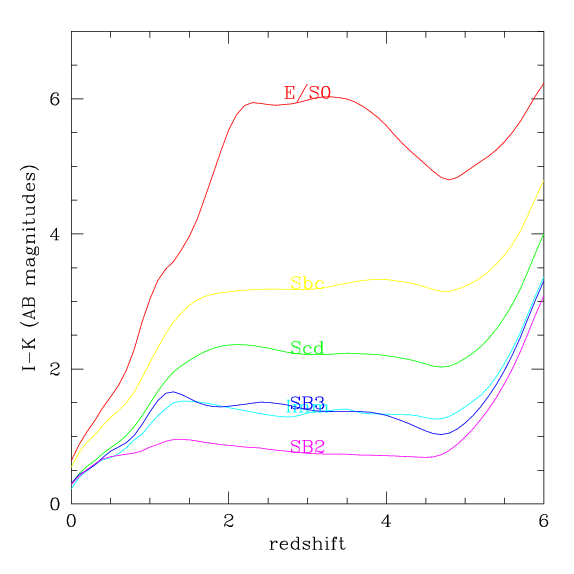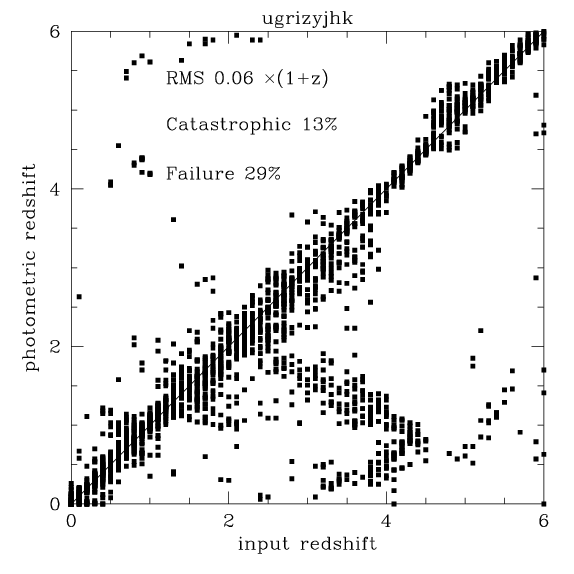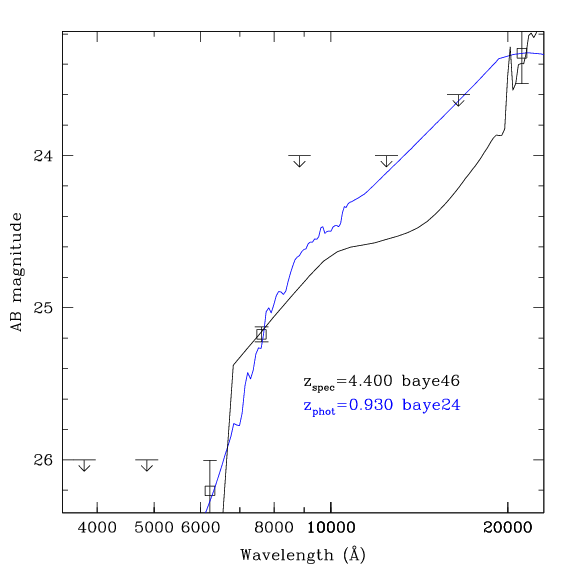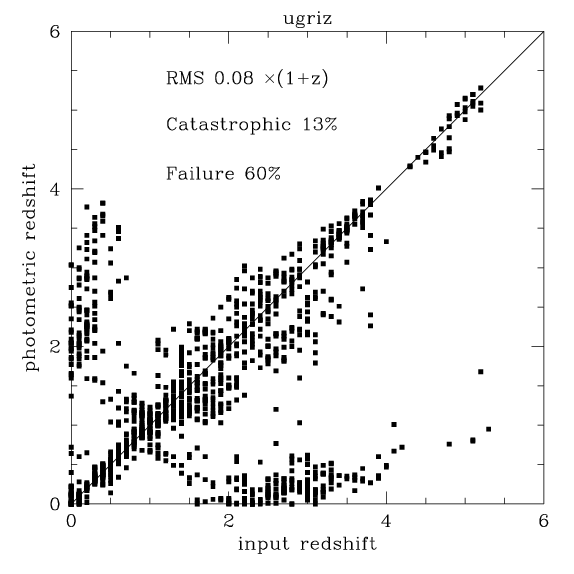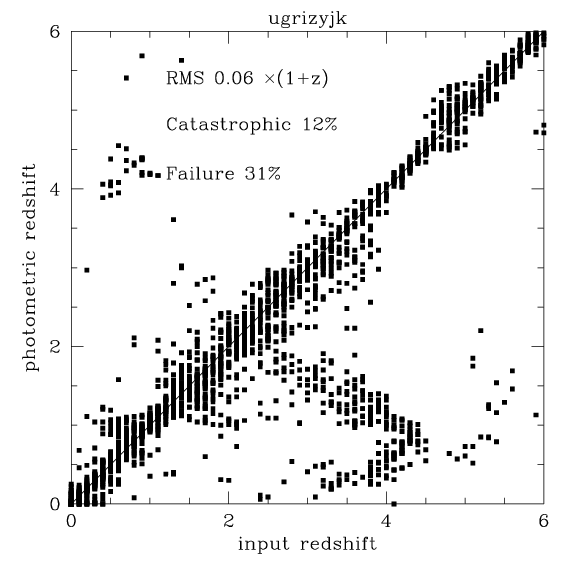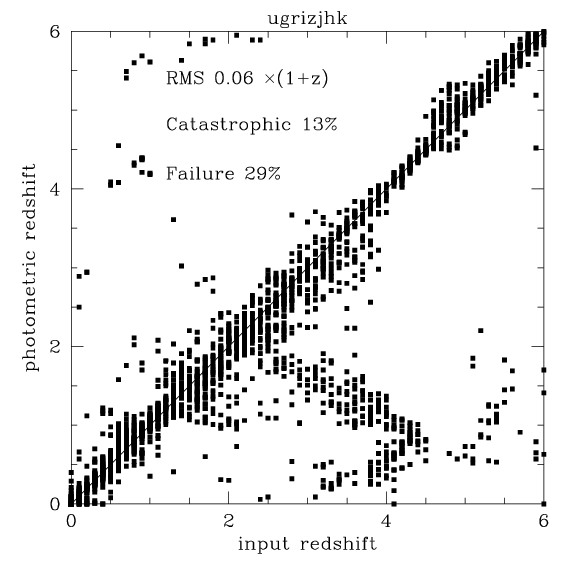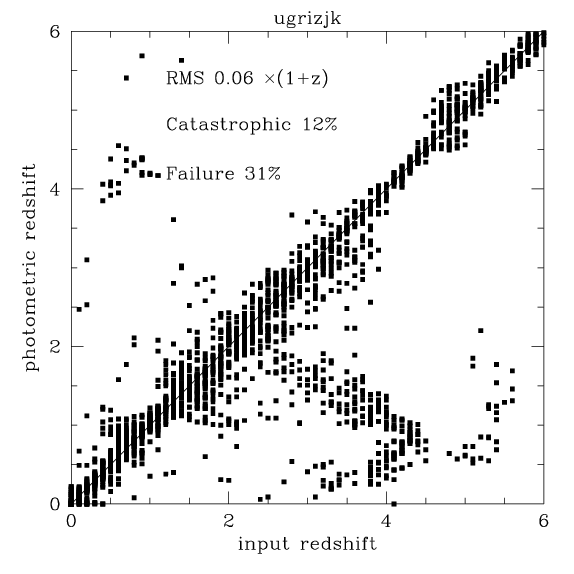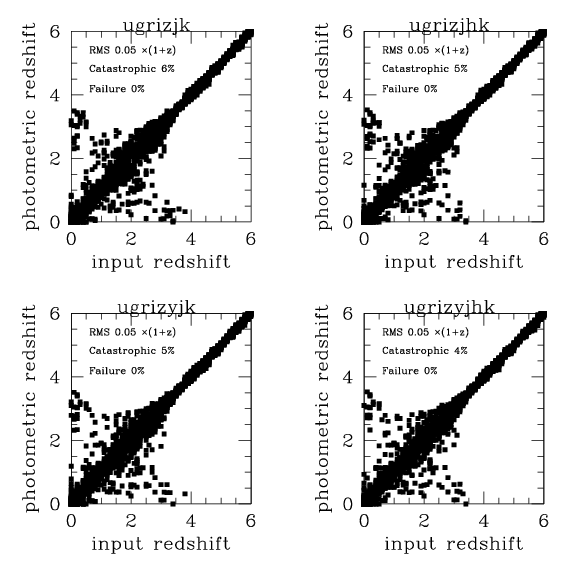|
Method:
A Monte Carlo type simulation was used. Galaxies of the full spread of
spectral types (as described
here) were used. These spectra were redshifted from z=0 to z=6.
The spectra were multiplied by the CFHTLS and WIRCam bandpasses to
produce photometry. The photometry was renormalized so that the K
magnitude was close to the WIRCam survey limit of K=23.4 AB mags.
Noise was added to photometry to simulate observational errors. If
the resulting magnitude was below the detection limit in a given band,
it was flagged as "undetected" in the simulated catalog.
The assumed magnitude limits are given
in the following table in AB mags. The WIRCam limits
are from the "straw man" description of the survey, while
the CFHTLS limits represent the current limits of the survey.
| u |
g |
r |
i |
z |
Y |
J |
H |
K |
| 26.0 |
26.0 |
26.5 |
26.5 |
24.0 |
23.8 |
24.0 |
23.6 |
23.4 |
The resulting simulated catalog was run through the usual template
fitting photometric redshift code.
Two samples were generated one "K=23.4 selected" on "I=26.5 selected".
As it turns out, because the typical colour of high redshift
galaxy is bluer than I-K=3, galaxies at the I-band detection
limit are rarely detected in K. This sample was not studied
any further.
| 
